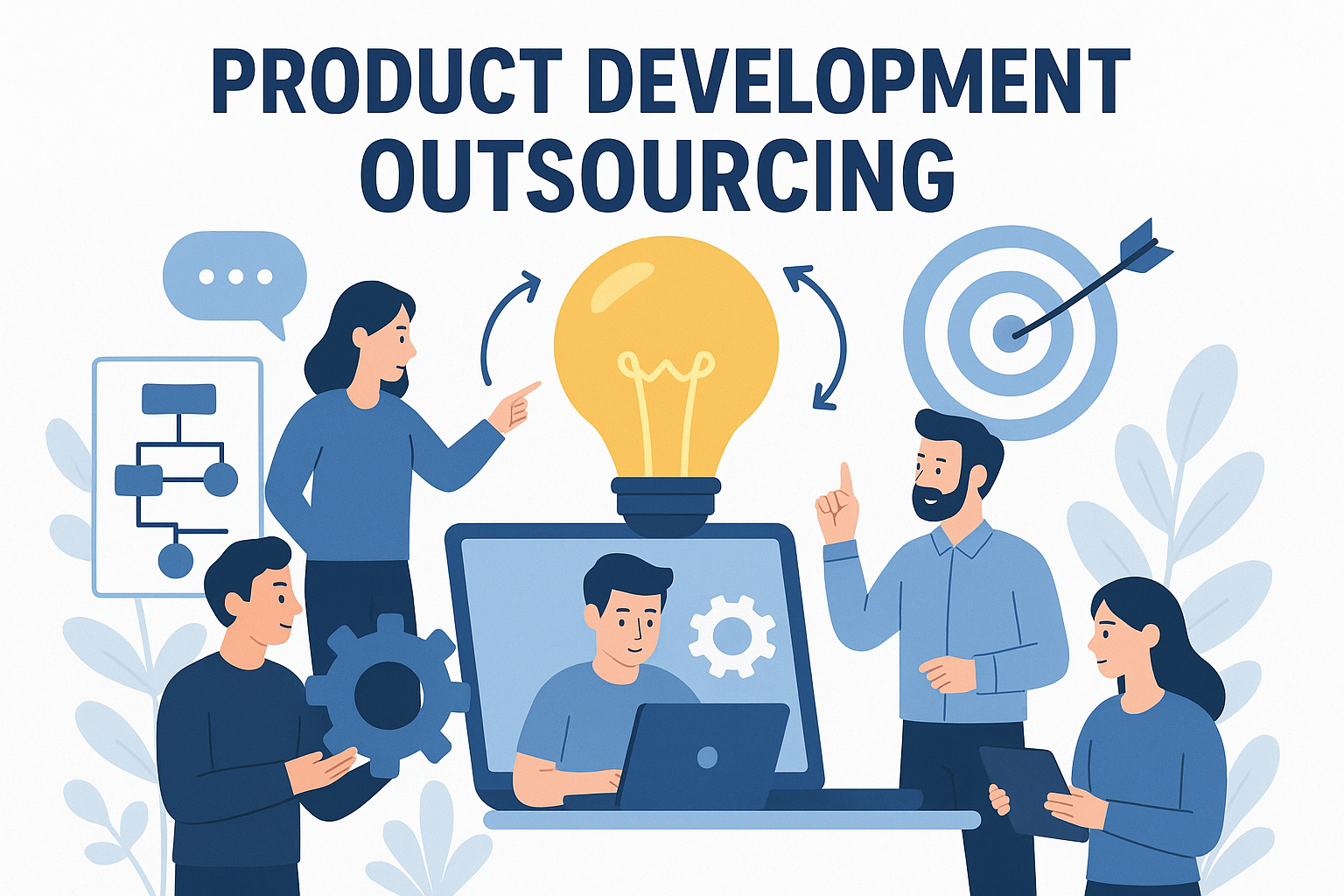Speed matters. So does staying lean. Outsourcing product development-when done right-unlocks both. It gives startups and scaleups alike access to specialized expertise without the long-term commitment of building a team from scratch. The goal isn’t just saving money-it’s reducing risk, accelerating go-to-market, and freeing up internal bandwidth to focus on your real differentiators: strategy, brand, customers.
What Is Product Development Outsourcing?
At its core, it’s partnering with external teams to build all or parts of your product. That could mean design, engineering, testing, deployment, or all of it. The best setups are collaborative and dynamic, where your external team functions like an embedded partner-not a vendor.
This isn’t just for software. It works across hardware, digital services, and even tech-enabled ops.
Why Outsourcing Can Be a Superpower
Most early-stage founders-especially the non-technical ones-fall into one of two traps: either they overbuild (spending $50K-100K on version 1), or they underbuild (handing a vague spec to a freelancer and praying it works). Both are recipes for heartbreak.
When you outsource well:
- You avoid permanent headcount and fixed overhead.
- You tap into talent that’s done this before-many times over.
- You move faster and smarter, getting to users and revenue quicker.
- And you stay focused on the business while letting others handle the tech.
- That’s the real value: not just saving money, but investing your limited time and resources in the highest-leverage areas.
The Hidden Pitfalls to Watch For
Of course, outsourcing isn’t magic. Done wrong, it becomes a cost center, not a growth lever.
- Misaligned expectations and unclear specs are the #1 reason projects fail.
- Without strong PM discipline and product context, output can miss the mark.
- Time zones, cultural gaps, and lack of shared language (product language, not English) can slow things down or create misfires.
- And without airtight contracts, you might risk your IP.
How We’ve Built Byldd to Solve Exactly This
At Byldd, we built our entire company to fix this problem-helping founders build MVPs that are just good enough to get revenue, validate the idea, and then iterate based on real user feedback.
We’ve automated massive chunks of the dev process. Think: plug-and-play modules for payments, dashboards, user management, notifications, and more. Our proprietary IP literally writes code based on structured input. That means we launch in 30-45 days for under $15K-sometimes under $10K-and our clients skip the typical 3–6 month build phase.
And it’s not just code. We act as a thinking partner-helping you figure out what to build first, what to skip, how to talk to customers, and how to set up your roadmap so that you can scale when traction hits.
Best Practices for Outsourcing Product Development (The Right Way)
If you’re outsourcing product development, you're not just hiring hands-you’re bringing on strategic partners. Here’s how to make it work:
- Anchor Everything in the Problem You’re Solving
Define your product’s job. Not what it looks like, but what problem it solves. Everything else is noise-cut it. - Limit Scope with Surgical Precision
Don’t build the dream. Build the test. Your v1 should be the fastest route to either a customer saying “yes” or giving you insight into why they didn’t. - Prioritize Communication and Context
Communication breaks when context is missing. Give your partner clarity on goals, users, and the “why” behind decisions-not just a list of tasks. - Work With a Team That Understands Startups
Not all vendors are built the same. You want a team that gets early-stage realities-tradeoffs, pivots, feedback loops-not just shipping tickets. - Set Weekly Checkpoints and Metrics That Matter
Whether it’s dev velocity, prototype completion, or user feedback loops-track progress with real, measurable outcomes. Avoid vanity metrics. - Think Long-Term From Day One
The right partner grows with you. Plan for handoff points, code maintainability, and knowledge transfer early on.
FAQs
Q: What are the significant benefits of outsourcing product development?
The big one? Speed to learning. You get to market faster, cheaper, and with access to experience you likely don’t have in-house. You also save on hiring time, reduce fixed costs, and gain the flexibility to scale up or down as needed-all while staying laser-focused on your customers and growth.
Q: How do you select a reliable product development outsourcing partner?
Look for thinking partners, not task takers. Prioritize teams that ask the right questions, challenge your assumptions, and have a track record of helping founders get to revenue. Bonus points if they’ve built IP, modular systems, or internal tooling to move fast-like we have at Byldd.
Q: What are the common pitfalls to avoid in product development outsourcing?
- Scoping based on features, not outcomes.
- Picking vendors who say yes to everything.
- Communicating only through specs.
- Ignoring post-launch maintainability.
- Failing to set up IP and data ownership early.
- These lead to bloated timelines, half-baked builds, and product-market flops.
Q: What strategies help ensure IP protection when outsourcing product development?
Use strong NDAs and MSAs that explicitly cover IP ownership, work-for-hire clauses, and data security. Make sure code repos are owned by you from day one. At Byldd, we assign IP and access control protocols from the start-every line of code belongs to the founder.
Q: How do outsourcing teams handle communication and project management efficiently?
It’s all about rhythm and transparency. Weekly check-ins, shared task boards, async updates, and direct lines of communication. At Byldd, every founder works with a dedicated product manager and gets a clear roadmap with milestone-based reporting. You’ll always know what’s happening, why, and what’s next.
Q:What are best practices for integrating outsourced product development with in-house teams?
Start with clear ownership boundaries. Set up a single source of truth for specs, workflows, and feedback. Use shared tools (Slack, Notion, Shortcut, etc.), and bring your external team into the same loop as internal stakeholders. Think of them as an extension-not an add-on.
Conclusion
Outsourcing isn’t a shortcut-it’s a strategy. Done right, it can shave months off your launch timeline, unlock expert talent, and get you real customer feedback faster than most internal teams can manage. But it only works if you treat it as a partnership, not a transaction.
That’s exactly what we do at Byldd. We help you build something customers will pay for-fast, lean, and built to scale. If you're ready to move from idea to revenue, we should talk.

